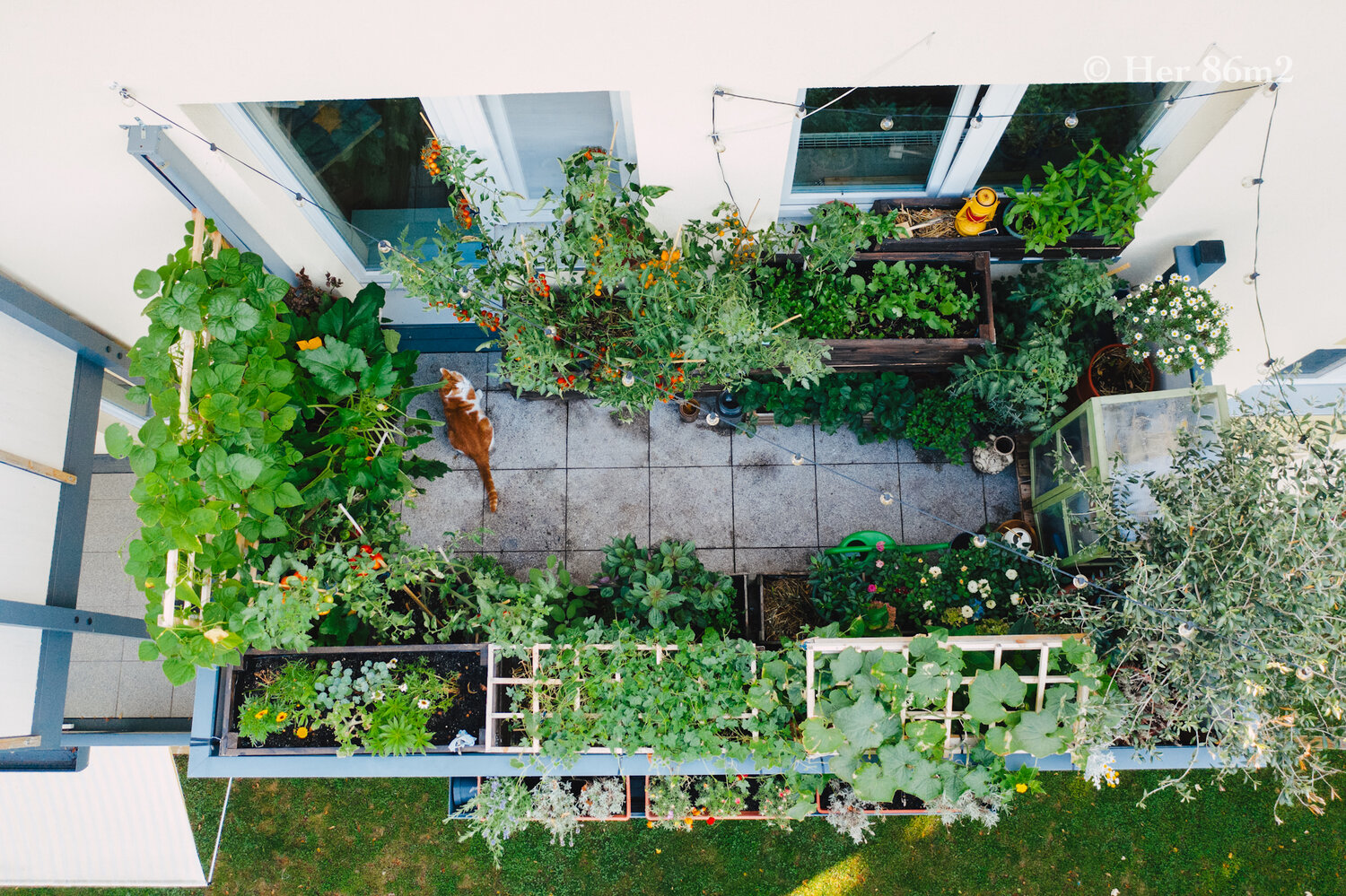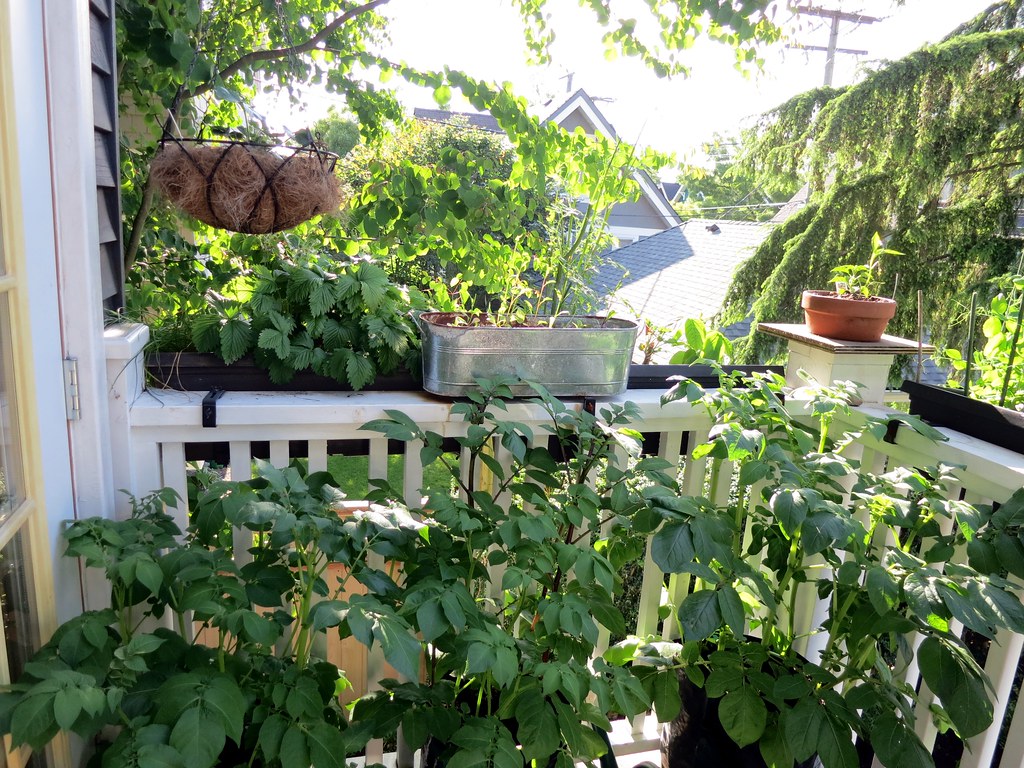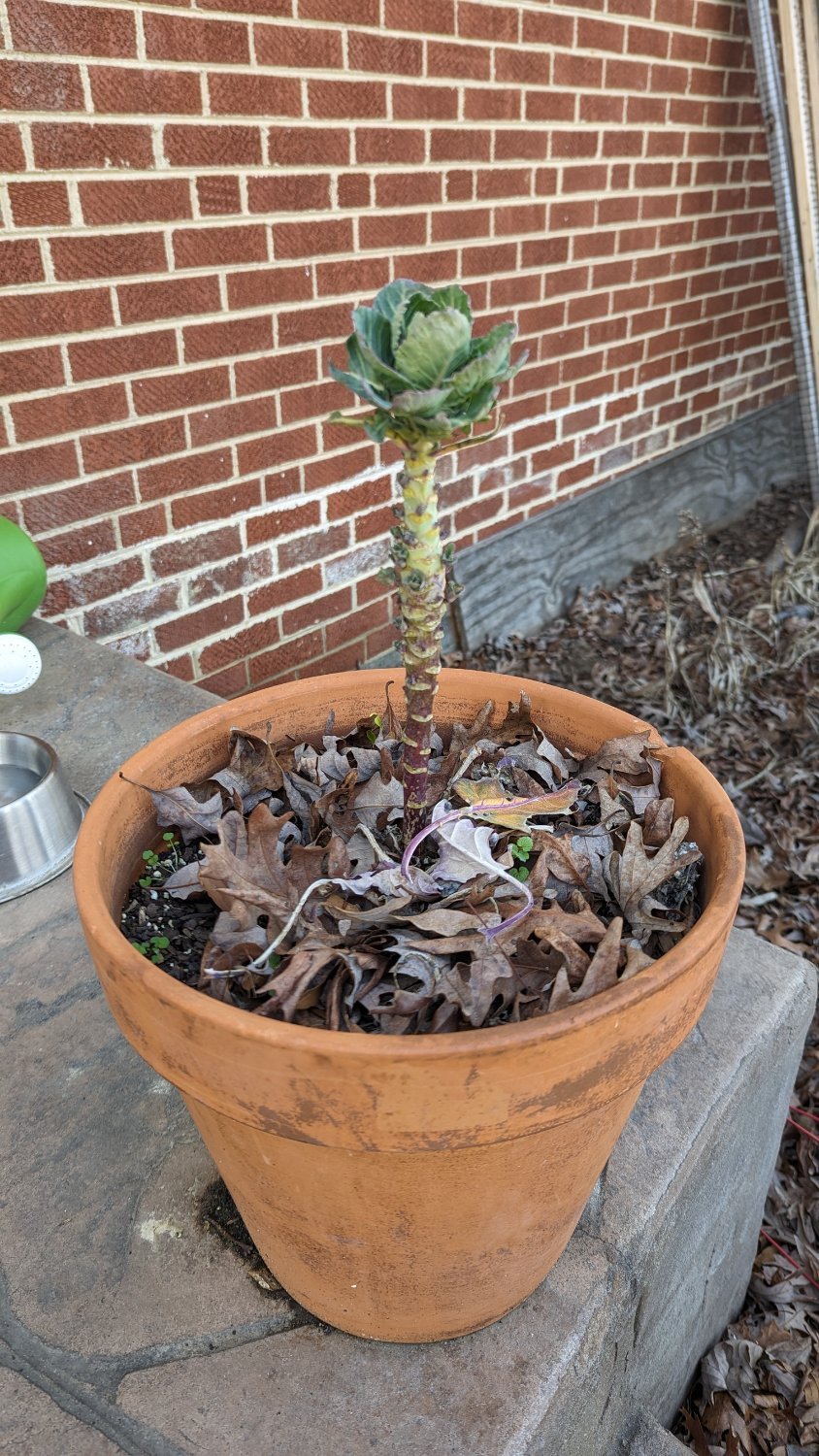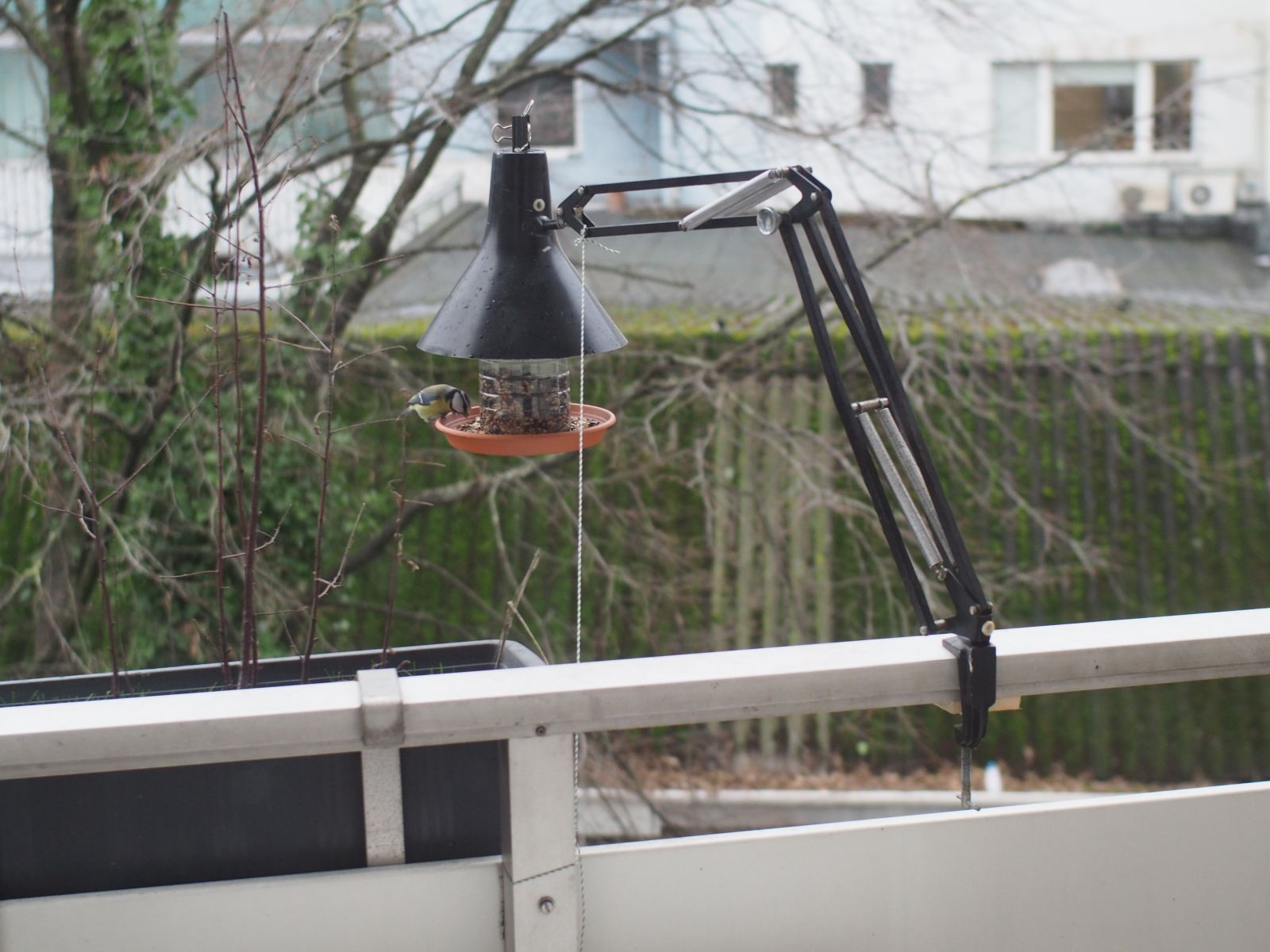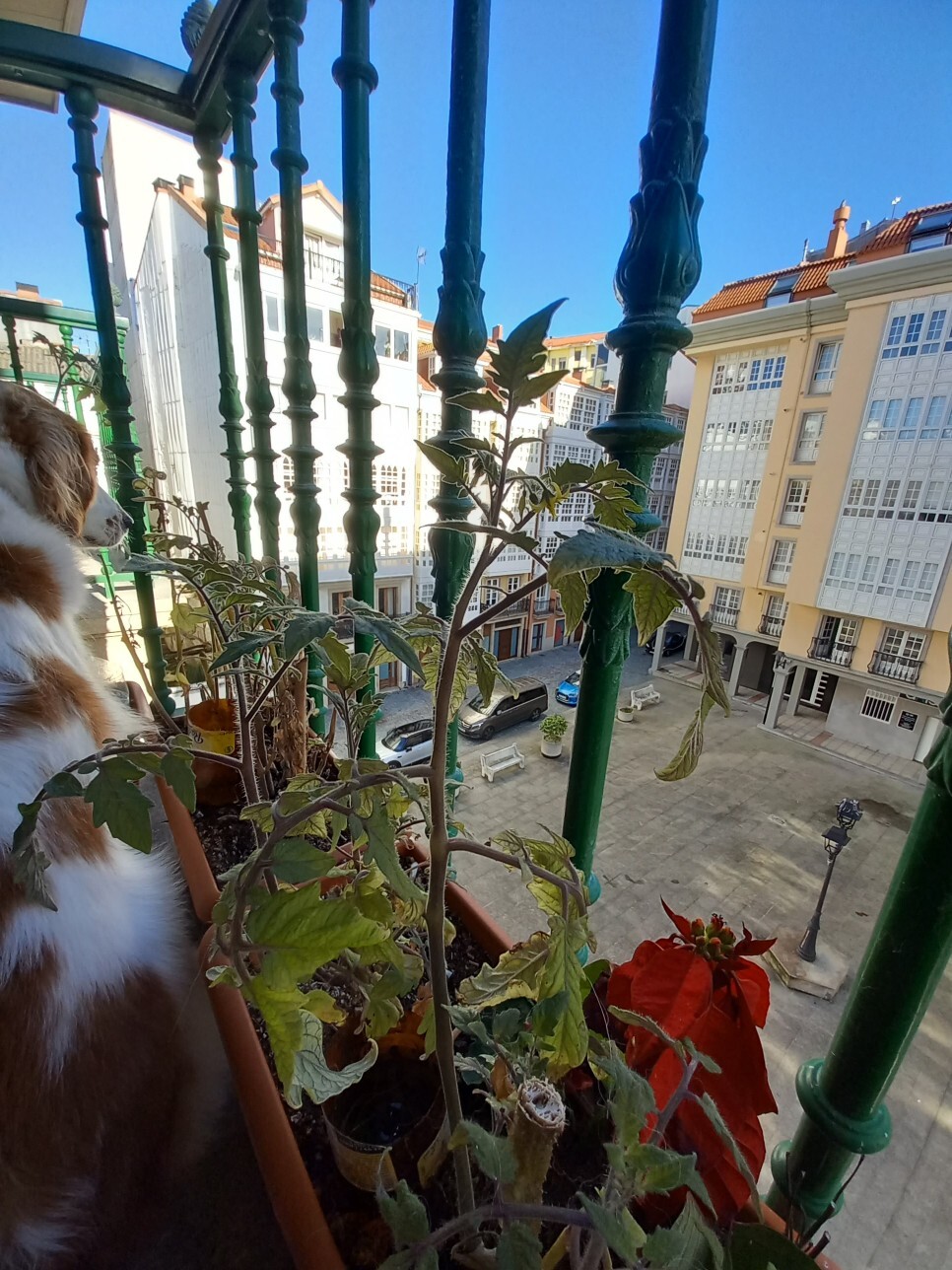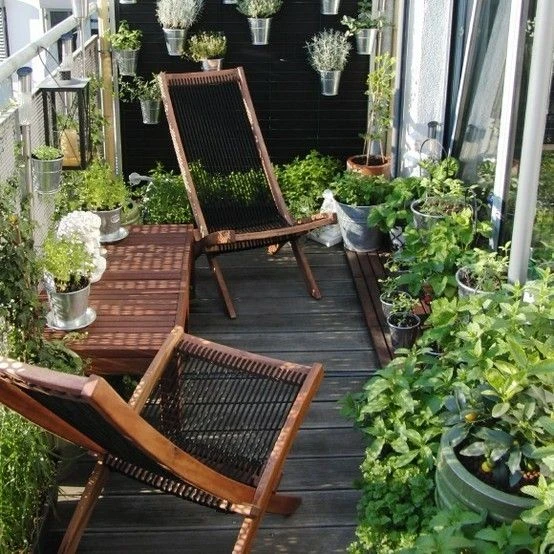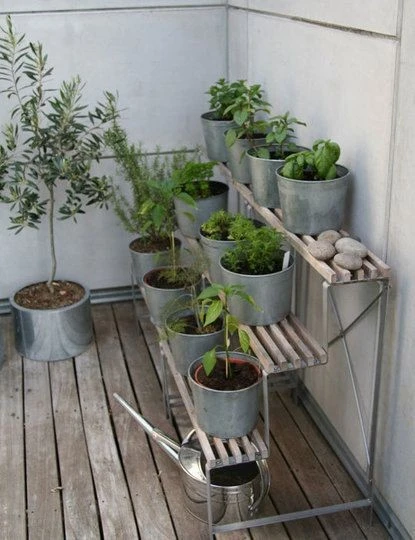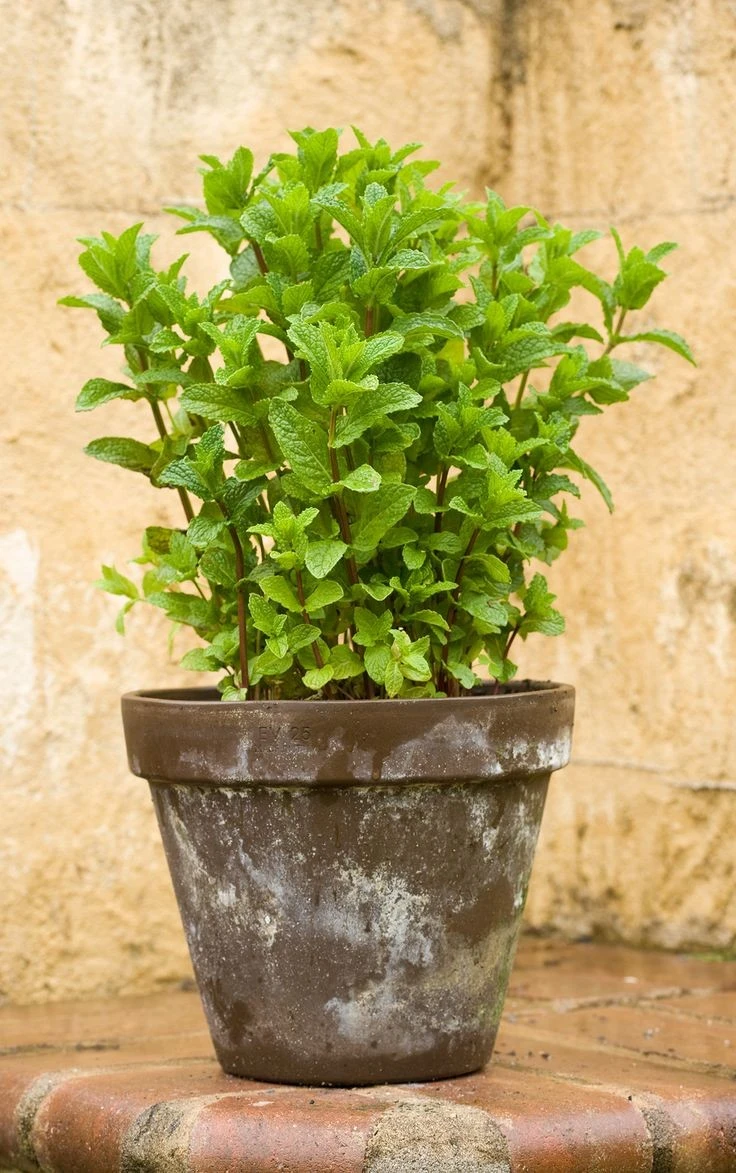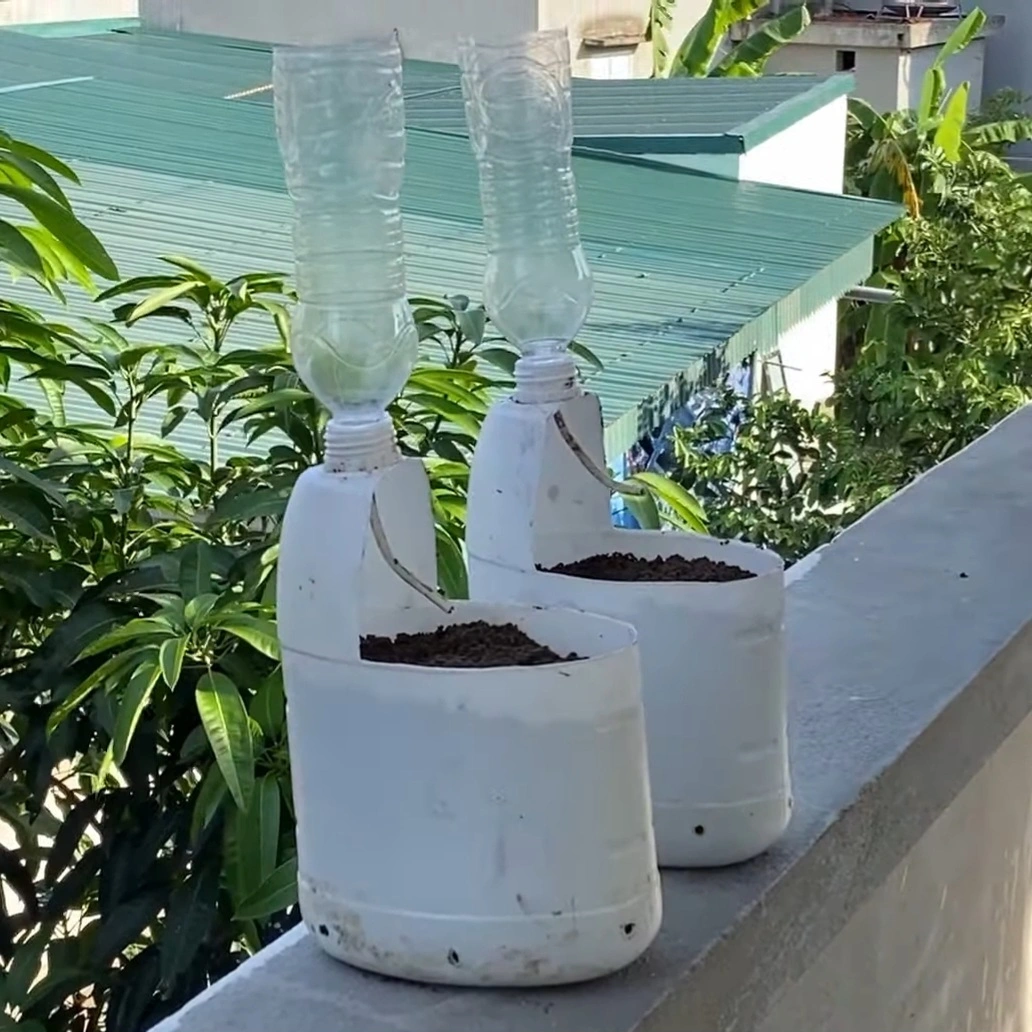I've had irrigation running on my porch for a few years now, so I figured it was worth making a post about how it works, and the pros and cons of it. I'm by no means an expert.
Pros:
- you don't have to worry about plants drying out on a hot weekend while you are out of town.
- you can grow plants in smaller containers than you'd otherwise be able to
- you can put plants in spots that would be annoying to water by hand
Cons:
- it's a lot of plastic. Typically the tubing is polyethylene or vinyl.
- you need to drain it in the winter
- it takes some time to figure out how to get the right amount of water to your plants
- the system that I have (and most off-the-shelf systems, I think) is not compatible with a rain barrel.
- you need a hose spigot
I have a porch with a lot of plants. My roof hangs over the porch, so I don't get any rain on my plants, and they are completely dependent on watering. This would typically work fine all throughout the spring, but then once summer comes, and the plants need more water, I'd inevitably lose some plants while I'm out of town. I can have friends water plants like my indoor plants that maybe need to be watered once a week, but I'm not going to ask someone to water 30 outdoor plants twice a day.
There are a few different common types of automatic irrigation systems. The most common you've probably seen is little sprinklers. Those are not ideal for containerized plants because you'd waste a lot of water, and get your porch/balcony really wet. Theres also things like soaker hoses which arent useful in our case. The type that I have, and recommend, is drip irrigation. It does exactly what it sounds like and drips water right where you want it.
There's two types of drip irrigation, and two subcategories of each. Individual emitters or emitter tubing, and each of those are available as simple emitters or pressure compensating. Individual emitters are just single droppers, and tubing is what it sounds like, a tube with a bunch of holes in it at regular intervals. The single droppers come in different sizes for different flow rates, and they are generally more convenient than the emitter tubing unless you have a big planter bed or something where you put a loop of the tubing.
If you think about a tube with a bunch of holes in it, the most water will come out of the first hole, and each subsequent hole will put out less and less, until eventually, for a long enough tube, nothing would come out. The water that comes out would also be dependent on what your water pressure is. To use that kind of system, you have to be crafty about it, and maybe arange your plants or run the tubing from thirstiest to least thirsty. Pressure compensating emitters somewhat solve this problem by outputting the same amount of water, as long as the water is somewhere between the highest normal household water pressure and a pretty low pressure. I can tell you firsthand that they dont work perfectly, and you'll have some that put out water faster than others, but it's mostly okay. I actually rearranged my plants to just put the more needy ones under the fastest drippers.
One thing you need to always keep in mind is the pressure of the water. I have no clue what the actual numbers are for my water pressure is, so let's say it's at 10 where it comes out of the house. It then passes through the timer (more on that later), which might nock off 1 unit of pressure. The water then has to travel up a floor of my house to where my plants are. The change in height might nock off another unit, and the resistance of that long stretch of skinny tubing might nock off another. Now it's down to 7. Each emitter might take .5 units. Once we get down to 1 unit of pressure, there isn't enough to push past the mechanism inside of the emitters, so you can't have any plants past that point. If you follow the math, that gives me 12 emitters. Technically, the emitters dont reduce the pressure in the main tube, they reduce the flow, which leads to a corresponding drop in pressure. Obviously, bigger diameter tubing can carry more water and water more plants. This is all why a rain barrel would be hard to use, the pressure will be pretty low unless your barrel is up much higher than your plants. Any debris from the barrel could easily clog the drippers, too.
I have probably 30 plants on that system, but I was only able to have about 12 with a single line of irrigation tubing, which in the US, at least, is 1/4 inch diameter. I had to run 1/2 inch supply tubing, and I have branches off of that with the 1/4 inch tubing. You might think that tubing with 4 times the cross sectional area could carry 4 times the water, but it's actually way more than that because of math reasons I don't need to get into.
The emitters come in different sizes, rated in volume per hour. I have basically all one size because I can always put 2 in a bigger pot.
The last thing to mention is the timer. The cheapest ones just have analog dials for "water for x minutes every y hours or days". Figuring out how much water to give takes some time. To start, I would make sure all of the plants are not sitting in completely dry soil. Dry soil, especially with peat in it like lots of potting mix, does not absorb water well, so water might roll off to the side, and down the edge of the container and out the drain holes. Then I'd run the water till you see it start to drip out of the drain holes a lot indicating that the soil is full. Then I'd back it off from that point by a bit. My emitters are rated for 1/2 gallon per hour, and in the spring, with seedlings and cool weather, I might run them for 5 minutes every day or every other day. When it gets to the summer, I have my timer water twice a day, with 10 mi uses in the morning, and another 5 minutes during the heat of the day. I have a "smart" timer that lets me have slightly more complicated schedules like that. If you are a tech savvy person, you could set up automatic rain delay.
Lastly, I'm not trying to promote any particular products over others, but this is the kit I started with, and I've expanded from there. It seems like the components are all fairly standardized in size, at least in the US, so you can mix and match from different companies to problem.
Hope that helps some people, and feel free to ask any questions.
TL;DR, irrigation is pretty useful and easy to set up.








